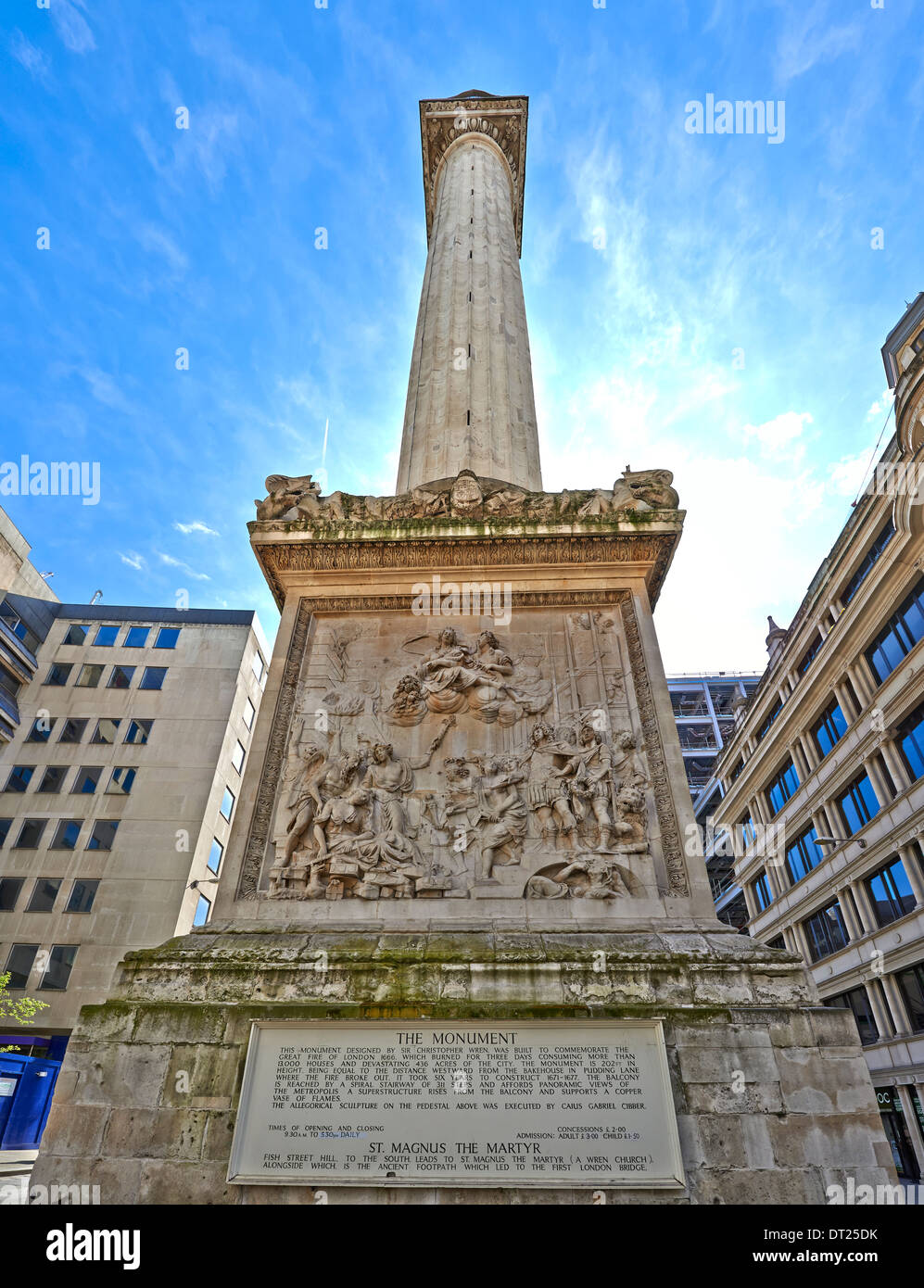The Monument to the Great Fire of London, more commonly known simply as the Monument

Image details
Contributor:
Rik Hamilton / Alamy Stock PhotoImage ID:
DT25DKFile size:
121.8 MB (5.7 MB Compressed download)Releases:
Model - no | Property - noDo I need a release?Dimensions:
5714 x 7448 px | 48.4 x 63.1 cm | 19 x 24.8 inches | 300dpiDate taken:
28 April 2013Location:
The Monument to the Great Fire of London, more commonly known simply as the MonumentMore information:
The Monument to the Great Fire of London, more commonly known simply as the Monument, near the northern end of London Bridge, which commemorates the Great Fire of London. It stands at the junction of Monument Street and Fish Street Hill, 202 ft (62 m) tall and 202 ft (62 m) from the place where the Great Fire started on 2 September 1666. Another monument, the Golden Boy of Pye Corner, marks the point near Smithfield where the fire stopped. Constructed between 1671 and 1677, it is the tallest isolated stone column in the world and was built on the site of St. Margaret's, Fish Street, the first church to be burnt down by the Great Fire. The Monument was designed by Christopher Wren and Robert Hooke. Its height marks its distance from the site in Pudding Lane of the shop of Thomas Farynor, the king's baker, where the Great Fire began. The top of the Monument is reached by a narrow winding staircase of 311 steps. A mesh cage was added in the mid-19th century at the top of the Monument to prevent people jumping off, after six people had committed suicide from the structure between 1788 and 1842.Three sides of the base carry inscriptions in Latin. The one on the south side describes actions taken by Charles II following the fire. The one on the east describes how the Monument was started and brought to perfection, and under which mayors. Inscriptions on the north side describe how the fire started, how much damage it caused, and how it was eventually extinguished. In 1681, the words "but Popish frenzy, which wrought such horrors, is not yet quenched" were added to the end of the inscription. Text on the east side generally blames Roman Catholics for the fire, and this prompted Alexander Pope to say of the area that it is: Where London's column, pointing at the skies, Like a tall bully, lifts the head, and lyes. - Mora Essays, Epistle iii. line 339 (1733-1734). The words were chiselled out in 1830.